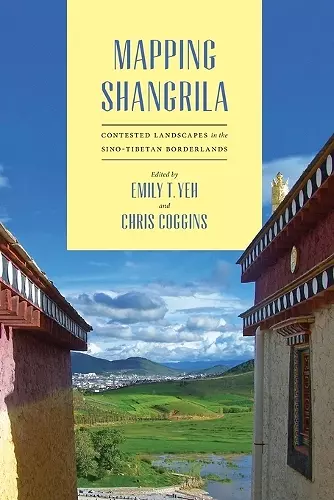Mapping Shangrila
Contested Landscapes in the Sino-Tibetan Borderlands
Emily T Yeh editor Christopher R Coggins editor
Format:Paperback
Publisher:University of Washington Press
Published:1st Jun '14
Currently unavailable, and unfortunately no date known when it will be back
This paperback is available in another edition too:
- Hardback£95.00(9780295993577)

Mapping Shangrila advances a view of landscapes as media of governance, representation, and resistance, examining how they are reshaping cultural economies, political ecologies of resource use, subjectivities, and inter-ethnic relations.
In 2001 the Chinese government announced that the precise location of Shangrila - a place that previously had existed only in fiction - had been identified in Zhongdian County, Yunnan. This book advances a view of landscapes as media of governance, representation, resistance, and examining how they are reshaping cultural economies.
Open-access edition: DOI 10.6069/9780295805023
In 2001 the Chinese government announced that the precise location of Shangrila—a place that previously had existed only in fiction—had been identified in Zhongdian County, Yunnan. Since then, Sino-Tibetan borderlands in Yunnan, Sichuan, Gansu, Qinghai, and the Tibet Autonomous Region have been the sites of numerous state projects of tourism development and nature conservation, which have in turn attracted throngs of backpackers, environmentalists, and entrepreneurs who seek to experience, protect, and profit from the region’s landscapes.
Mapping Shangrila advances a view of landscapes as media of governance, representation, and resistance, examining how they are reshaping cultural economies, political ecologies of resource use, subjectivities, and interethnic relations. Chapters illuminate topics such as the role of Han and Tibetan literary representations of border landscapes in the formation of ethnic identities; the remaking of Chinese national geographic imaginaries through tourism in the Yading Nature Reserve; the role of The Nature Conservancy and other transnational environmental organizations in struggles over culture and environmental governance; the way in which matsutake mushroom and caterpillar fungus commodity chains are reshaping montane landscapes; and contestations over the changing roles of mountain deities and their mediums as both interact with increasingly intensive nature conservation and state-sponsored capitalism.
"Notable for the consistent high quality of all of the included articles, readers will be rewarded with interesting and accessible studies regardless of where they open the book. . . . [G]reater than its parts. . . . [I]t is the unveiling of a new way of thinking about landscapes as dynamic sites of exchange. . . . [R]eaders become witness to a landscape emerging from its pages that is as multidimensional and dramatic as one might imagine the ‘real’ Shangrila to be."
-- E. Elena Songster * Environmental History *"[T]he editors of this book have done a fine job assembling recent studies into a comprehensive volume of ethnography and place-based geographical analysis. . . [F]inely written and informative, in the end this book is greater than the sum of its parts. . . . It simultaneously is empirical and humanistic—and for that reason illuminating. . . . [I]t successfully and pleasingly weds the fluttering of geographical imagination to real issues on the ground."
-- David Zurick * Geographical Review *"With the publication of [In the Land of the Eastern Queendom and Mapping Shangrila], we see that “Sino-Tibetan Borderland Studies” has in a sense come of age as a distinct area of inquiry. . . . The Sino-Tibetan frontiers are thus of considerable interest in their own right, while bringing an important range of broad issues facing China into close focus as well."
-- Matthew T. Kapstein * Pacific Affairs *"[A] welcome move away from a predominant view of Shangrila as a product of ‘Western’ desires and fantasies. . . [A]n important addition to the growing body of studies on China’s borderlands (material and conceptual), which are central to social, political, and economic transformations in contemporary China."
-- Trine Brox * Journal of Asian Studies *"Mapping Shangrila is an important—if somber—addition to the scholarly literature on Tibet, Tibetan peoples, borderland and frontier studies, geography, political ecology, and China area studies. Yeh and Coggins have once again proven themselves adept at producing scholarship that is solidly grounded in geographic theory and perspectives, while appealing to and accessible to much broader audiences. . . . Yeh and Coggins and their contributors should be commended for this important contribution, which should serve as a foundational reading for anyone seeking to understand how meanings and mappings of ethnicity, nature, and culture are shaped and reshaped in this fascinating and important region."
-- Darrinn Magee * AAG Review of BooISBN: 9780295993584
Dimensions: unknown
Weight: 476g
348 pages